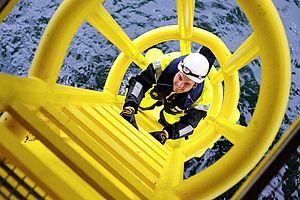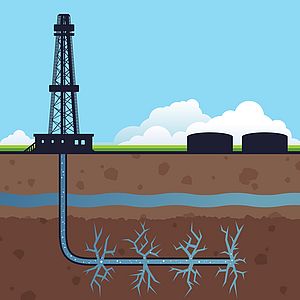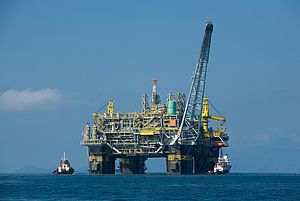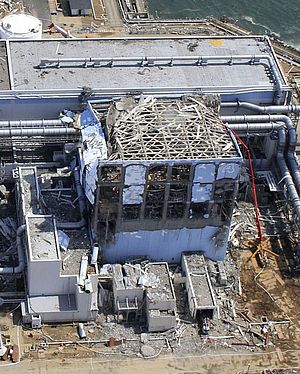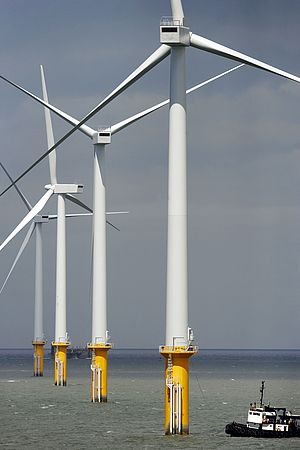Whether in industry or in private life, we use pipes that convey gases, liquids and free-flowing or pourable solids everywhere. Controls - such as pumps, valves, gate valves and regulators - control the flow and impact the performance and safety of a system. Valve World Expo, the trade fair for industrial valves and controls, will be held from 27 to 29 November 2012, giving an overview of state-of-the-art control engineering. This is the second time that it will be held at the Düsseldorf exhibition centre.
Growing energy demand
There has been a general rise in requirements on the performance of piping systems and thus also on the technical characteristics of controls. One example is the energy sector, from the production of energy sources, through their exploitation to the generation of electric power in generators. The challenges that face companies which are directly or indirectly involved in power generation include improvements to the efficiency and cost effectiveness of their systems, the careful use of resources and due regard to environmental concerns.
Despite intensive efforts to increase renewable energy sources such as hydropower, solar energy, wind power and geothermal energy, fossil fuels are still playing a central role in the “energy mix”. The necessary development in the production of oil and natural gas is largely based on deep-water projects and thus on areas that are posing ever-increasing technical challenges. One spectacular example of the physical stress on pipes and controls and of the consequences of potential failure is the explosion of the Deepwater Horizon oil platform in the Gulf of Mexico in April 2010. The oil rig became known throughout the world when its blowout preventer (BOP) – a safety valve on the seabed 1,500 metres below sea level – could no longer be shut, making it impossible to prevent the emergence of massive volumes of oil for several months. This led to a hitherto unparalleled environmental disaster.
The oil came from an oil field about 4,000 metres below the seabed. Situated underneath several thousand metres of rock, it was subject to a degree of pressure which, according to experts, was up to 600 times higher than the pressure of air on the earth’s surface. To cater for this immense pressure at the exit point, the steel safety valve was gigantic in its dimensions, weighing 300 tonnes and being 15 metres high. In theory, any malfunction should have led to a process whereby hydraulically operated valves, situated on three levels, would have closed the conveyor pipe, which was nearly 50 cm thick. However, an inquiry panel set up by the US Congress found that the valve, which had originally been classified as “totally failure-proof”, could potentially develop 260 faults. The latest BOPs are now designed to withstand an oil pressure of around 3,500 bars and can operate at depths down to 4,600 metres and at temperatures up to 260°C.
Thermal power plants
The essential components of a steam power plants based on either fossil or nuclear fuel are not only steam turbines and steam generators but also pipes and controls. The higher the general efficiency of a power plant, the greater the specific efficiency with which energy sources can be exploited. In this way, a conventional power plant can produce more energy from the same amount of fuel. Or, to put it differently, as fewer resources are required for the same amount of electricity, the use of fossil fuels involves lower volumes of harmful emissions. Efficiency can often be increased through modernisation. The purpose of 700°C technology is to operate at higher steam temperatures and thus to increase the level of efficiency. Any components that are under a substantial amount of physical stress require the use of nickel-based alloys. The power plant operator E.ON reports that pipes and controls in a live steam pipe system can only withstand a pressure of 350 bars if they have a wall thickness of up to about 80 mm, and E.ON is currently testing a range of manufacturing and processing methods for such pipes and controls.
Geothermal energy and wind power
The exploitation of wind power and geothermal energy from the soil is increasing in importance in many places, particularly as it involves no harmful waste. A hydro-geothermal system uses the heat of hot water, extracted from a deep borehole. The operating principle of this “hot dry rock process” involves an underground heat exchanger situated between at least two boreholes. Cold water is injected into one borehole, at a pressure of up to 150 bars, whereupon the water picks up the heat from the hot rocks and is then received by another borehole. The thermal energy then drives generators that produce electricity.
The first major European power station that was based on this principle is situated in Soultz-sous-Forêts (Alsace), where it delivered hot water at a temperature of 142°C in a four-month trial in 1997. Since then drillings have gone further, to below 5,000 metres, reaching temperatures of 200°C. This would allow the operation of an electric power station at steam temperatures of over 180°C. Another state-of-the-art feature of such geothermal systems is that the thermal water circuit can be run under pressure to prevent the escape of gases dissolved in the hot water.
One geothermal project is a power station in Landau in the German region of Palatinate, not far from Soultz-sous-Forêts. The Landau facility produces electric power and district heat from hot water 3,000 metres below the ground, at nearly 160°C and at a pressure of at least 20 bars. The controls, e.g. pumps, pressure relief valves and safety valves, need to withstand a high level of thermomechanical strain and must be extremely corrosion-proof, as the groundwater has a very high salt content. The controls, especially at the wellhead, are similar to those in the oil industry.
A good deal of attention is currently being attracted by the use of wind power, as offshore “mega wind farms” are being built on numerous European coasts. Each wind farm can achieve some 15 GW, which is the equivalent of 15 nuclear power stations. Under today’s plans offshore wind farms are to cover about a quarter of the UK’s energy needs by 2020. At a wind farm the kinetic energy of the wind is deflected into rotary motion by rotor blades and is then converted by a generator into electrical power. Again, this is a wide-ranging field of activity for valve and control manufacturers, as numerous hydraulic systems are required – many of them electronically controlled – for instance to allow infinitely adjustable rotor blades to suit different wind speeds and also to operate braking systems, to ensure lubrication and cooling and to effect emergency shutdowns. Some valves are electrically actuated for days or even months, while being continually under pressure. It is of course vital that they should function reliably at all times. Siemens, a leading provider of offshore wind turbines, recently pointed out that the carbon dioxide emissions that were saved through its eco-friendly technologies in 2009 matched the annual emissions of cities such as New York, Tokyo, London and Berlin.
Promising markets – promising opportunities
The growing global demand for energy and the wide range of options for generating electricity have created lucrative fields of activity for a large variety of valve and control manufacturers. Valve World Expo, the world’s leading trade fair for industrial valves and controls, is the ideal place to obtain comprehensive information about the range of products and services in this field and to analyse the latest technical trends. It is aimed primarily at professionals from the oil and gas industries, energy utilities, water management, the chemical, pharmaceutical and food industries, the marine and offshore industries and also specialists in machine and plant engineering, engine and vehicle construction and the shipbuilding industry.
Valves in power engineering
- extreme requirements
- by Messe Düsseldorf GmbH
- December 21, 2011
- 246 views




